MUTATIONS
Return to Crysalla Species Directory
In addition to their various traits, Crysalla will often have various mutations. Crysalla can have up to 5 mutations.
Crystal mutations
Different Color Crystals
- Two or more different colors of the same crystal species as the Soul Stone grow.

different crystals
- Two or more different species of crystals from the Soul Stone grow.
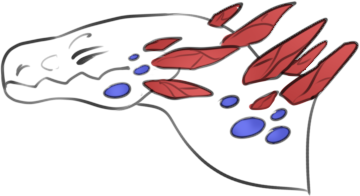
Color Changing Crystals
- Crystals may shift color slowly due to diet.

Glowing Crystals
- Crystals glow in the dark.
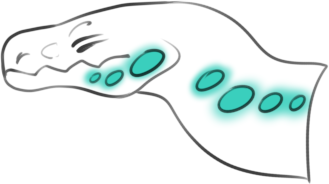
Floating Crystals
- Crystals may float when shed off the body, and follow the host around, or manipulated by the Crysalla.

Two Soul Stones
- One Soul Stone inherited from each parent. Both remain on the chest and the Crysalla may grow crystals of both gemstones.

Fused Soul Stones
- Acquired condition from consuming another Crysalla’s Soul Stone, or by absorbing another via the Sacrifice ability.
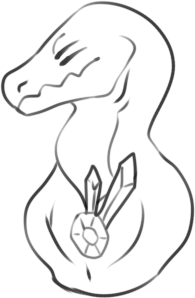
Diamondization
- Referring to the hardness of a diamond, any crystals develop stronger than natural and cannot be broken or shed. They have to be surgically cut from the flesh if they grow too large and cumbersome for the Crysalla.
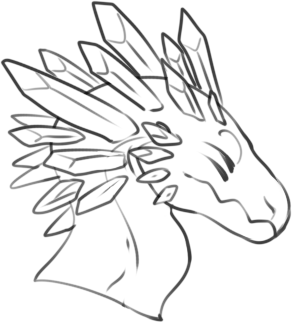
Geode
- A wound in the Crysalla crystallizes when healing, resulting in an open geode permanently.

opalization
- Scales begin to opalize, forming progressively growing strong armor over the skin.

exoskeleton
- A mutation causing mineralized bone growths on the outside of the body, such as a raised spine or skull.

hemophilia
- In Crysalla, the inability for the blood to naturally crystallize when exposed to nitrogen in air, and can lead to severe blood loss. Most commonly a result of accidental inbreeding.

brittle crystal disease
- Results in crystal growths being extremely fragile, breaking and shedding more frequently. Most commonly a result of accidental inbreeding.

crystalline cancer
- Disease in which the gene to produce crystal growths is constantly activated, resulting in unregulated and overwhelming crystal growths unable to shed that threaten to cover the whole body without regular surgical intervention.
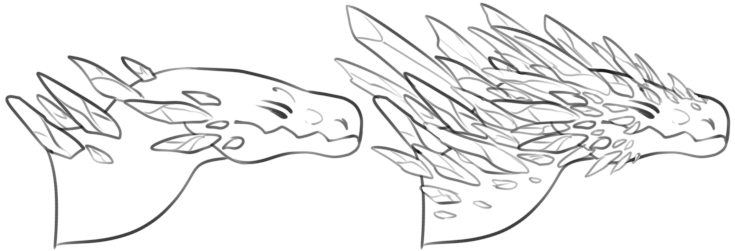
Head mutations
Two Eyes
- Second set of eyes doesn't develop in the egg.

eyeless
- Eyes fail to develop in egg.

Colored eyes
- Eyes are a single solid color, rather than pure white.

straight beak
- Smooth beak, without the typical jags.

fangs
- Bony protrusions from the beak downwards.

tusks
- Bony protrusions from the beak upwards.

hydra
- Extra head, a result of conjoined twinning. Can be fraternal or identical.

Forked Tongue
- Mutation that causes a forked tongue.
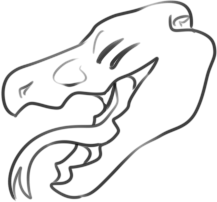
Prehensile Tongue
- Long, maneuverable tongue capable of gripping.

two tongues
- Mutation that causes a forked tongue to split into two different, independently maneuverable tongues.

heat pits
- Mutation that forms infrared sensing heat pits on the beak, changing the shape of the skull.

detachable jaw
- Mutation that separates the bottom jaw into two, joined with stretchy connective tissue, and allows the jaw to stretch apart and swallow larger prey whole.

pharyngeal jaw
- Aquilla mutation that adds a second set of retractable jaws in the throat for catching underwater prey.

whiskers
- Sensitive whiskers from the snout, vary in length, number, and can have hair.

deafness
- Partial or complete hearing loss, so the Crysalla must rely on vibrations alone, or sight, used sparingly. Communication proves difficult, as they have to rely on speaking words they cannot hear, since other Crysalla will not open their eyes to watch hand signs.
blindness
- Partial or complete vision loss. Doesn't interfere much with the Crysalla's daily life.
Limb mutations
Polycaudal
- Extra tails, up to three.

polydactyly
- Extra toes, any limb, of any number or alignment. Severed polydactyl limbs are considered good luck charms.

polymelia
- One or multiple extra arms or legs.
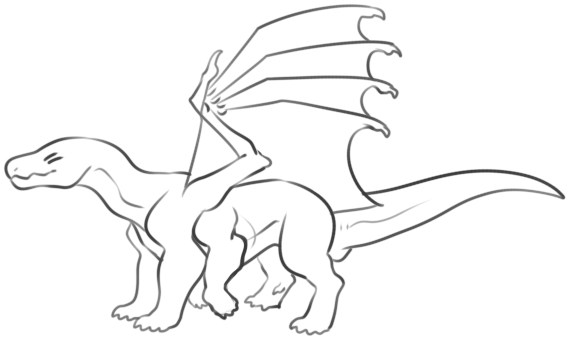
extra wings
- One or two extra pairs of wings. Children of Deities or Presalla only!

dwarf wings
- Dwarfism only affecting the wings, short, stubby wings, incapable of flight.

Pointed Wings
- Wing membranes are characteristically pointed.
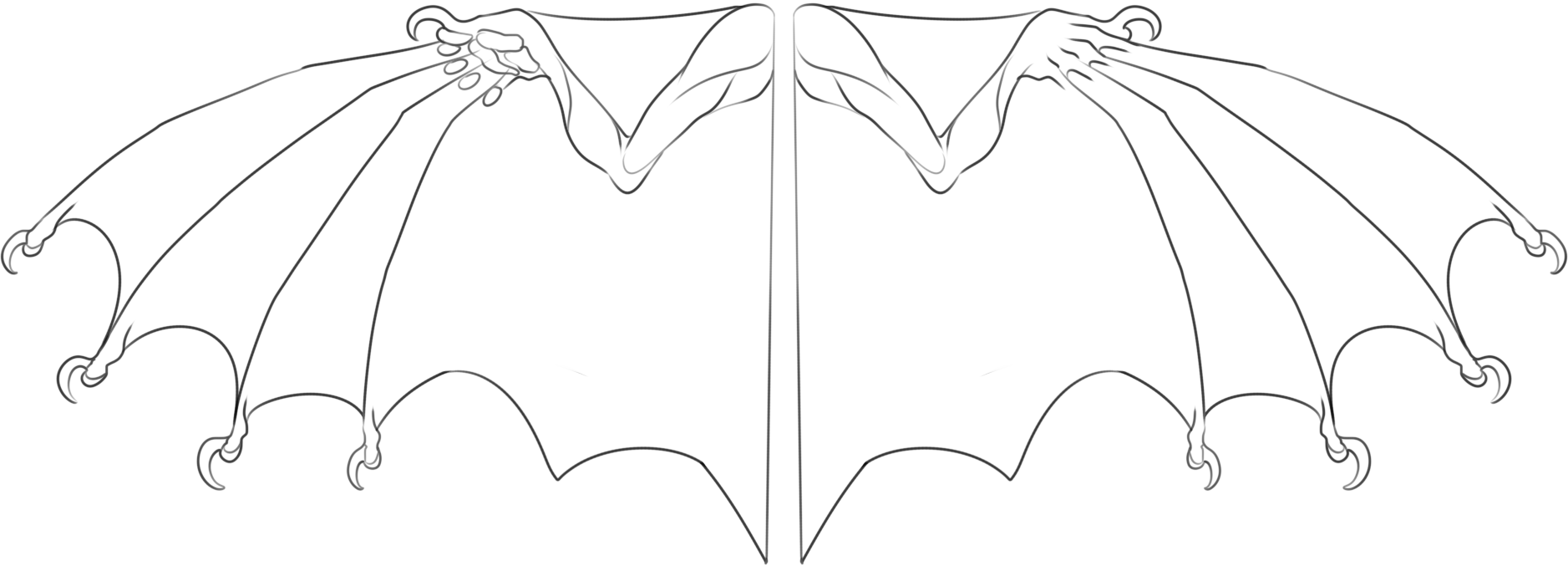
fringed wings
- Wings are characteristically fringed, with shaped membranes.
pennant wings
- Wings are pennant-shaped, with a long, cartilaginous spine.

Tattered Wings
- Wings have large stretches of holes in the membranes, as well as two cartilaginous spines.
Glider wings
- Wings have two or three cartilaginous spines stretching from the body, forming a glider appearance where they connect to the tail.

cobweb wings
- Wings have two extra fingers stretching from the elbow, forming a cobweb-like appearance.

Flare wings
- Wings have three extra fingers stretching from the elbow, forming a flared appearance.

moth wings
- Wings have two extra fingers stretching from the shoulder, as well as a rounded membrane, giving a mothlike appearance.
butterfly wings
- Wings have three extra fingers stretching from the elbow, as well as a rounded membrane, giving a butterflylike appearance.

Dragonfly wings
- Wings have three extra fingers stretching from the shoulder, as well as a rounded membrane, giving a dragonflylike appearance.

wingless
- No wings.

tailless
- No tail.

bobtail
- Tail spine is shortened to a nub.

Feature mutations
overgrown claws
- Claws grow rapidly, resulting in long, unkempt sickles. Must be trimmed.
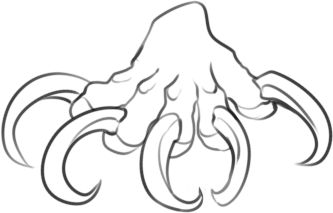
serrated claws
- Sharp, serrated claws for walking on ice and gripping cliffsides.

raptor claws
- Thumb and dew claw become enlarged, sickle shaped for holding down prey.

gills
- Inherited from an Aquilla parent or grandparent, the Crysalla has gills to breathe underwater. Internal or External

webbing
- Webbed toes, inherited from an Aquilla parent or grandparent.

Oiled Filaments
- Fur, Feathers, Pycnofibers, or Hair of Crysalla are heavily oiled and waterproof, preventing waterlogging and algae growth.

membrane
- Membrane from the wings connecting the arms or legs to the body or tail.

tail spade
- Sharp tail spade at the tip of the tail.
![]()
tail vane
- Vane of soft tissue at the tip of the tail, can be any shape, helps with flight.

tail club
- Hard, bone club at the tip of the tail for defense, capable of breaking bone.

tail rattle
- Rattlesnake rattle at the tip of the tail, can make a warning noise. Linked to the Venom mutations.
![]()
sail
- A large, bony sail on the back of the Crysalla for aid in thermoregulation.

Venom mutations
Crysalla venom is a deadly neurotoxin, with its symptoms beginning with drowsiness and worsening to respiratory failure and paralysis. Venom can manifest in oral venom glands, a tail barb, or venomous spined fins in Aquilla. All three venom-producing genes are linked with Soul Stones of poisonous minerals. Crysalla venom must be injected into the bloodstream, and is harmless when drunk or absorbed by the skin. It is often used in potion ingredients, and can be milked.
Venomous Barb
- Venomous tail barb

Venomous Fangs
- Venomous bite, internal oral venom glands in the upper jaw that inject venom from protruding “fangs” in the beak.
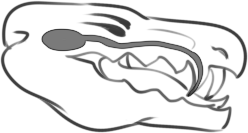
venomous saliva
- Venomous bite, internal oral venom glands in the lower jaw that drool a weaker venom that can be dangerous if it enters a wound from a bite.

venomous spines
- Venomous spiny fins, inherited from an Aquilla parent or grandparent.

Decorative mutations
Fins
- Inherited from an Aquilla parent or grandparent, the Crysalla has cartilaginous spines with webbing.

Bulbs
- Aquilla mutation, bioluminescent bulbs sprout from the Crysalla’s body for deep-sea hunting. Linked to the Bioluminescent Markings gene.

wattle
- Any shape or color, a decorative wattle on the neck that exudes sex appeal.

hooded
- Cobra's hood.

frills
- Similar to Aquilla fins, may vary in shape and size.

frillback
- Mutation that causes some or all feathers on a Crysalla to curl.

rex
- Mutation that causes some or all fur or hair on a Crysalla to curl.

locs
- Mutation that causes some or all hair on a Crysalla to naturally coil into dreadlocks.

wooly
- Mutation that causes wool to grow anywhere on the Crysalla. Can be shaved and spun.

swallowtail
- Long trails of membrane on the wings.

glasswing
- Wing membranes are translucent.
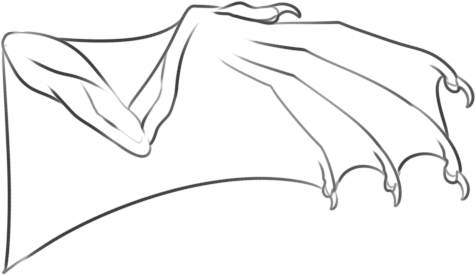
scaleless
- Exposes the Crysalla's bare skin. Fleshy, fragile, and prone to injury.

yetism
- Body becomes overgrown with fur.

overgrowth
- Body becomes entirely covered with pycnofibers.

body mutations
dwarfism
- True dwarfism, stunted body that is unable to continue growing past adolescence. Incapable of flight.

gigantism
- Crysalla develops an issue in the growth hormone producing pituitary gland, resulting in unnaturally rapid and increased growth.

dragonscale
- Disorder in which the Crysalla slowly grows hard, impenetrable metallic scales over time, that gradually cover more of the body. Cannot be removed, and may go blind if the scales grow over the eyes as it progresses.

petrification
- Disorder in which the organic body will slowly turn to stone over time.

fraternal twins or triplets
- Both Crysalla are impregnated after mating, and lay separate eggs, which are genetically distinct.

identical twins or triplets
- Two or three Crysalla develop in the same egg, and are genetically identical.

Marking Mutations
bioluminescence
- Markings glow in the dark.

sparkle
- Markings shimmer and sparkle in the light.

iridescence
- Markings reflect rainbow in the light.

metallic markings
- Markings shine and reflect light, mimicking a metallic appearance.

color changing markings
- Markings may shift between two different colors slowly due to diet, retaining the same pattern.

seasonal markings
- Markings change color season by season, retaining the same pattern. Between 2-4 color palettes.

camouflage
- Ability to completely change marking colors to any at will, like a chameleon. Maintains the same marking pattern.

mosaicism
- Crysalla possesses more than one genetic line, resulting in clashing markings.

chimerism
- Crysalla twins that fused in the egg, possessing two genetic lines. Can be bilateral or random.

piebaldism
- Crysalla possesses a white spotting gene that removes pigment from the body and crystals.

abundism
- Crysalla possesses a pseudo-melanistic gene that results in dark pigment on parts of the body and crystals.

melanism
- Crysalla possesses more melanin, affecting the body, bones, and crystals.

albinism
- Crysalla lacks melanin, affecting the body and crystals.
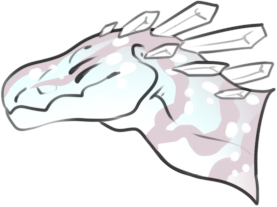
vitiligo
- Crysalla progressively loses melanin over time, affecting the body and crystals.

Magical Mutations
elemental affinities
- Crysalla is capable of manipulating only one of nine magical elements: Water, Fire, Ice, Dark, Light, Nature, Plague, Air, or Earth.

vulcan
- Vulcan - A mutation only found in Aquilla, the body burns hot and smoke streams from the gills.

vapor
- Vapor - A mutation only found in Aquilla, the body stores large quantities of water and breathes out a fine mist through the gills.

firescales
- Fire Mutation - Crysalla's body burns hot, and burns anything that touches them. Dangerous and rare. Firescales Crysalla burn calories very quickly, and need to eat a lot. Body may be wreathed in flames. Fire-retardant apparel required.

icescales
- Ice Mutation - Crysalla's body is icy cold to the touch, and freezes anything that touches them. Icescales Crysalla are also able to survive extended periods of time without eating.
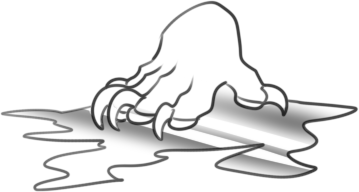
enhydro
- Water Mutation - A drop of water becomes trapped inside the Crysalla's Soul Stone, and the Crysalla develops the ability to be a weathermancer.

naturebound
- Nature Mutation - Body grows organic matter, such as lichen and mosses. Flowers bloom in their presence, and they're deemed blessed by the Gods.

earthbound
- Earth Mutation - Ability to grow noncrystalline mineral deposits from the Crysalla's body, creating an impenetrable armor.

necromancy
- Plague Mutation - Ability to resurrect dead Crysalla from their remaining Soul Stone.

mistwing
- Air Mutation - Ability to transform one's body into a mist/smoke, and travel.

shadewalker
- Dark Mutation - Ability to shadowtravel, short form teleportation achieved by slipping through the metaphysical plane and back into the physical.
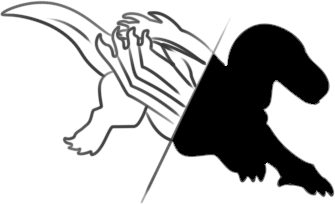
metacreativity
- Light Mutation - Ability to create physical items from light.

fireproof scales
- Scales of the body are invulnerable to fire, and any hair, feathers, or fur will not burn. May develop with or without a fire affinity.



